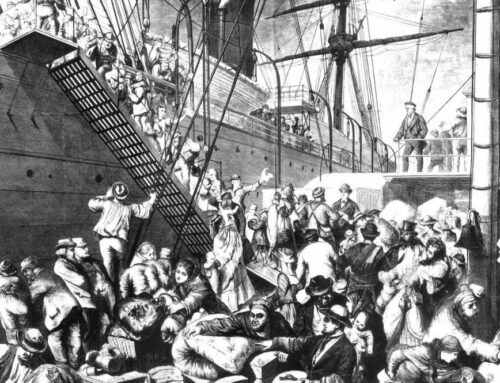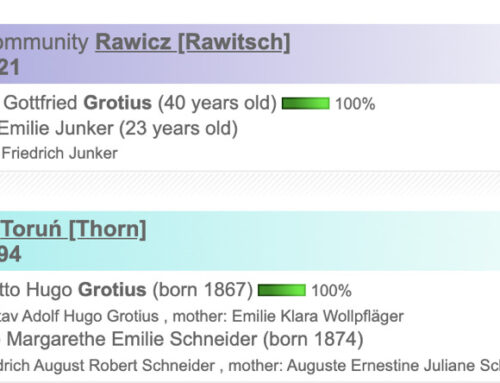Finding missing marriage records is today’s topic. If you are searching for an elusive marriage record, it may be useful to consider where the local Greta Green was located for your ancestral couple.
My post a few days ago covered the concept of “Gretna Green,” shorthand for any place where eloping couples could be swiftly married. Its origins lie in the English Marriage Act of 1753, which was designed to prevent upper-class men and women from “marrying down.” To circumvent this law, couples could elope to Gretna Green in Scotland, where marriage requirements were less strict.
FamilySearch says:
A Gretna Green is a favored marriage place. When a couple runs away from their home area to get married in a place with fewer marriage restrictions, the place they go is often called a “Gretna Green.” They may want to marry at a younger age, want to wait a shorter period after obtaining a license, want to marry without parental consent, want to avoid procedures such as blood tests, want less paperwork, want to avoid paying a marriage bond, want to keep the marriage a secret, want a less expensive marriage, or want to marry a closer cousin than their home district will allow. Or there may be a special romantic place to elope. Some couples wanted to wed in the same place their friends got married. When enough couples resort to a particular place it may gain a reputation as a Gretna Green.
In the United States, Gretna Green locations are also referred to (far less romantically) as marriage mills. The FamilySearch map at the top of this post identifies counties that served as Gretna Greens, primarily for metro areas in the United States. For example:
- For Washington, DC and Pennsylvania, search Carroll (Westminster), Cecil (Elkton) and Howard counties, Maryland
- For Seattle, search Port Orchard, Kitsap County, Washington
- For Spokane, search Coeur d’Alene, Idaho
- For Chicago, search, Crown Point, Lake County, Indiana
When I teach my session on Chicago research from afar, I recommend the Lake County, Indiana, records as an alternative to Cook County. Between 1915 to 1940, Crown Point was a well-known marriage mill. An estimated 175,000 couples flocked to the Lake County Courthouse to be wed, since it became associated as a “quick and painless” marriage site. Justice of the Peace Howard Kemp, in the earliest years of the marriage mill, advertised in Chicago newspapers that Crown Point was the “Gretna Green of the Midwest.” In Crown Point, couples could marry 24 hours a day, seven days a week. By 1940, a three-day waiting period for blood tests blunted the appeal of Crown Point to couples in a hurry.
So I decided to take my own advice, because I’ve long been missing a record for a second marriage for a Chicago couple in my tree. He was born in Iowa, she was born in Chicago; no marriage records were found in Iowa or Illinois for their first marriages to others or for their second marriage to each other.
Knowing Indiana had less strict marriage laws than Illinois, I went to the Indiana databases at FamilySearch.
Then I chose the Indiana, Marriages, 1811-1959 database and there was my couple, Ralph Lee Baker and Cecelia Boesen Juhl, waiting patiently for me to find them.
Finding missing marriage records may be as simple as looking for the Gretna Green nearest to where your couple lived.






For New York and New Jersey check out Maryland, it was still a popular place to elope to in the 1970’s http://blogs.weta.org/boundarystones/2013/02/14/elkton-maryland-quickie-wedding-capital-east-coast
Well done! Californians especially should look in Nevada.
Nancy,
I want to let you know that two of your blog posts are listed in today’s Fab Finds post at http://janasgenealogyandfamilyhistory.blogspot.com/2014/08/follow-friday-fab-finds-for-august-15.html
Have a wonderful weekend!
Thanks for this. Seeking the equivalent in South Carolina where couples from North Carolina went…